The secrets behind Iron Man 3's mindblowing VFX
Framestore reveals how it got under the skin of Tony Stark’s enemies for Iron Man 3.
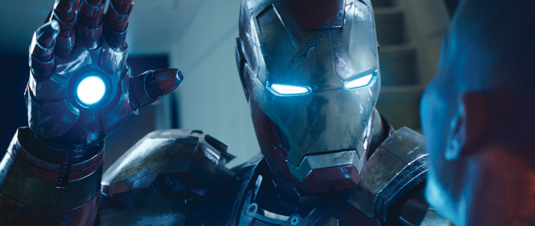
As superheroes go, Tony Stark aka Iron Man, is refreshingly human. Underneath that suit of high-tech armour, he's arrogant, tortured and has a dodgy ticker to boot. The occasional army of alien interlopers aside (Avengers Assemble) his enemies tend to be equally relatable, if never exactly run of the mill.
Thus, in Iron Man 3, Stark must face off a media-savvy terrorist and an army of soldiers given a biotech boost called Extremis, one that bestows great strength, the power to regenerate limbs, and some very cool under-the-flesh fireworks.
Several VFX studios contributed to the film, including Framestore, where 97 people spent five months working on 178 shots (113 of which made the final cut). Its workload included shots of the Iron Man suit in the film's iconic Air Force One sequence, plus various fire and digital-double effects, though the biggest challenge lay in setting the look for Extremis - deploying this across seven of its own key sequences as well as laying the blueprint for other vendors to follow.
"Five months with so many shots made for a very tight schedule," says CG supervisor Alexis Wajsbrot. "We had to come up with a plan to reproduce the Extremis effect easily. It took the full capacity of the Framestore pipeline to create a small factory. The result was that, just by pressing a few buttons, the FX TDs and lighters were easily able to update their shots if the model, track or even the look of it needed changing."
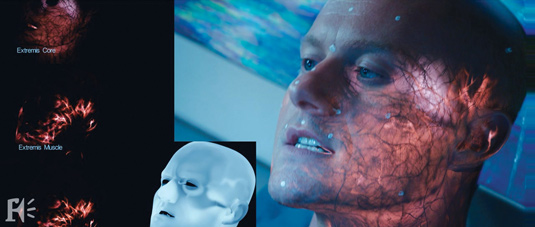
Extremis excellence
When Framestore began working on Extremis, the final look still needed to be nailed down, so initial vendor Digital Domain passed over early reference materials. "As soon as some of our Extremis shots got close to being approved, we then sent the assets of each character (the skin plus the whole anatomy model for each one) as well as the methodology, we were using to create the effect back to Marvel," says Wajsbrot.
"External VFX supervisor Chris Townsend was on hand to make sure that if any company was doing significant work on Extremis or the Iron Man suit, this was sent to all the other companies involved."
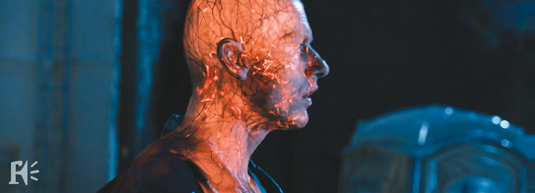
Lava flow issues
There were three main challenges when it came to building a system capable of creating the Extremis effect, and doing so in an efficient manner, says Wajsbrot: "The first was to set up the look, mixing an anatomically correct component, revealing the bone, lymphatic system and muscle structure, with a lava effect. Then we had to make it seem like the Extremis was flowing deep into the body, rather than just affecting the surface, despite the fact that we were in effect comping on top of the actor in the plate."
Daily design news, reviews, how-tos and more, as picked by the editors.
The biggest challenge was working out how far we could stray from what is real and still look plausible
"The biggest challenge was working out how far we could stray from what is real and still look plausible," says compositing supervisor Chris Zeh. "We started with a very detailed and anatomically quite correct model of a head with all the bones, muscles, blood vessels, lymphatic system and so on, but it soon became clear that there was too much to let any light through from the inside. So we stripped it and replaced things with others that looked more like what you would expect to see, despite being anatomically completely wrong."
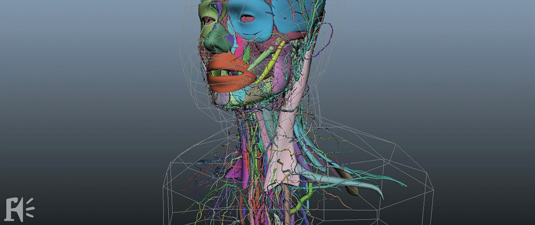
Zeh says they also found that the arms and hands ultimately required a different treatment, due to relatively small volumes involved: "We ended up having them more constantly lit from the back instead, whilst trying to maintain a consistent look."
A hellish assassin
Framestore was also responsible for a striking sequence in which bio-enhanced villain Ellen Brandt regenerates from a heavily burned state. Again the studio needed to tread a fine-line between fantasy and realism, in this case avoiding a burned look that would be deemed
too gory. The same basic setup used for other Extremis sequences provided the underlying effect, with more on top, but here the underlying glow peeks through the cracks and scabs of Brandt’s skin.
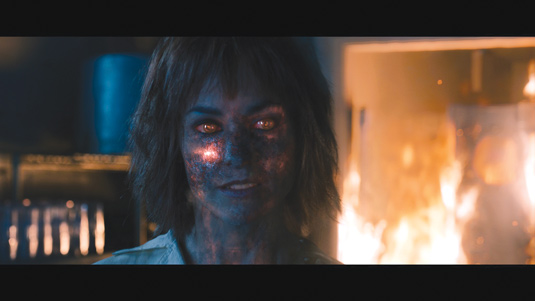
"The technique was to take the Extremis flow, tweak it in Nuke, then do a 2D simulation in Maya to make the texture grow in an interesting way," says Wajsbrot. "In one shot Brandt is practically full-CG, with a full body track. Aside from her dress, hair, teeth and lips we rendered everything, including her eyes. Then there's fire and smoke simulation, with flame coming from the doors and embers coming from Brandt herself." Framestore's efforts, along with those at the other studios involved with the project, collectively working on over 2,000 visual effects, have clearly paid off.
Words: Mark Ramshaw
This article originally appeared in 3D World issue 178.

The Creative Bloq team is made up of a group of art and design enthusiasts, and has changed and evolved since Creative Bloq began back in 2012. The current website team consists of eight full-time members of staff: Editor Georgia Coggan, Deputy Editor Rosie Hilder, Ecommerce Editor Beren Neale, Senior News Editor Daniel Piper, Editor, Digital Art and 3D Ian Dean, Tech Reviews Editor Erlingur Einarsson, Ecommerce Writer Beth Nicholls and Staff Writer Natalie Fear, as well as a roster of freelancers from around the world. The ImagineFX magazine team also pitch in, ensuring that content from leading digital art publication ImagineFX is represented on Creative Bloq.
